Yabusame Shinji at Shimogamo Shrine
Published by CamDarling on
Yabusame (流鏑馬) is a type of horseback archery that was commonly practiced by Samurai in ancient feudal Japan. Today, Yabusame is used in traditional rituals to bestow blessings upon the people and appease the Shinto Gods. The ritual involves shooting three targets, however it was originally developed as practice for archers as a simulation of real combat.
A Yabusame ritual is held every year in Kyoto at the Shimogamo Shrine as part of the Aoi Matsuri (Hollyhock Festival). It’s a fun combination of a parade, sporting tournament and traditional Japanese ceremony, in authentic feudal period costumes!
Yabusame Shinji – Event
- Hours: 1:00 pm to 3:30 pm but arrive early for a good place to watch!
- Fee: Free, 1,000 seats available for 2,500 Yen ($25 USD) each.
- Phone: +91 75-781-0010
The horseback archery event is held every year on May 3rd at the Shimogamo Shrine in Kyoto. The event is part of the opening ceremony of the Aoi Matsuri Festival (also known as Kamo Festival).
The event is more of a parade and ritual than a sports tournament. Participants wear traditional clothing and use long wood & bamboo bows similar to those used by ancient Samurai for hundreds of years in feudal Japan. The riders race down the track and shoot three wooden targets.
You’ll want to find a place to stand near the targets!
Shimogamo Shrine
The Horseback Archery Event is held on the grounds of Shimogamo Shrine every year. The Shrine quite beautiful and one of the Seventeen Historic Monuments of Ancient Kyoto and World Heritage Site.
Hours & Events
- Fee: Free
- Hours: 6:30 am – 5:00 pm
- Phone: 075-781-0010
- More Info: Discover Kyoto
The Yabusame Shinji event is held in the shadow of the Tadasu no Mori forest, under the lovely canopy each May 3rd. Visitors can walk along the wide trails to central shrine. The is also a closing ceremony on May 15 called “Aoi Matsuri”, one of the largest festivals in Kyoto as a spring and harvest celebration.
The formal name of the Shrine is Kamo-mioya-jinja (賀茂御祖神社) and dates back to the 6th century. The land surrounding the Shrine was home to the Kamo Clan whose descendants are said to still be living nearby.
Yabusame Shinji Ritual
The horseback archery event is a ritual to please the Shinto gods that watch over Japan. The riders wear costumes styled to look like important court nobles in ancient Japanese society.
The riders hold 2 meter long asymmetrical bows called “Yumi” (弓) and the 1 meter long arrows are called “Ya” (矢). For the ritual, the arrows “Ya” are blunted with round ends in order to make the loud sound when striking the wooden boards. (See video). Curiously, the feathers used in the arrow fletching would all come from the same wing side of the bird because they have a natural curve that would give the arrow it’s spiral. The rider with the best performance is awarded a white cloth signifying divine favor, similar to the Joust in European middle ages.
The riders thunder down the 255 meter long track, steering the horse with their knees as they take aim at the targets. Scoring all three hits successfully is considered a great accomplishment! Yabusame is considered a martial art for its difficulty of mastery. Archers on horseback must remain calm in the face of enemies and death, mastering the horse, archery and fear itself. Training for Yabusame involved specific breathing techniques for focus and steady aim, much like today’s Olympians in Biathlon (Skiing & Shooting). Except, Yabusame requires the release of the arrow at high speed and during the physical exertion of riding a horse! Very challenging indeed… and then some of these bows had up to 150 lbs draw strengths. Insane! It’s an art that required years of training to master.
History of Horseback Archery in Japan
Archery in Japan dates back to before 300 BC, but the long bow used in the Yabusame ritual originated from around 300 BC and evolved over 1400 years until it was essentially perfected in the 16th century. The bows are remarkable creations! Works of art. They are made of wood, bamboo and leather laminated together using old traditional techniques adopted from China. The hand grip is placed exactly 2/3 the way down the bow from the top to both counter the natural elasticity of the wood and reduce vibrations. The lower grip also made it easier to shoot from kneeling and horseback.
Archery on horseback quickly emerged from 400 AD with the Japanese light cavalry. By the 10th century, Samurai would compete in contests and duels to display their Yabusame skills. Similar to the Joust, the Samurai would ride at each other at full speed and attempt to fire three arrows at the opponent. Today’s ritual has targets placed to imitate vulnerable spots on the enemy: Head-shots. However in feudal Japan, contest ended once honor was satisfied or someone was dead.
The Samurai of feudal Japan were a warrior class with a high value on honor. Today we know it as “Bushido” the way of the warrior. An ethical code of conduct with a specific set of virtues and principles. But in the past, it was more of a collection of social customs… like the pirates code, they were more like guidelines than the law.
There are many famous stories of Samurai letting a worthy opponent escape battle for simply reciting poetry while being shot at by archers on horseback. The idea of being in control, fearless and calm even while staring down an inevitable death was highly praised. Samurai would challenge or seek out other well known Samurai in battle in order to gain prestige from defeating them. To defeat one so highly skilled was to also defeat all those who had fallen to that Samurai.
One story involving a Samurai and Yabusame is that of Nasu no Yoichi in 1185 AD:
In the Battle of Yashima, the Heike were defeated in battle and managed to escape to their boats, while waiting for the right wind the samurai placed a target upon their mast as a challenge to their pursuers on horseback along the coast. Nasu No Yoichi rode his horse into the sea and shot the target winning him fame and notoriety, even to today.
Battle, duels, honor and ritual were all part of being a Samurai.
Two Schools of Yabusame Martial Arts
There are two schools of martial arts in Japan that taught Yabusame and also Kasagake which is a less ceremonial and more gamesmanship type of horseback archery.
The two schools are the Ogasawara and Takeda schools, both originates from very influential clans that date back to the 11th and 12th century. The Takeda Clan was part of the famous Minamoto clan that was an off branch of the Imperial Family. The Ogasawara Clan was actually a branch of the Takeda Clan. The Japanese Clan hierarchy is extremely confusing.
The specific origins of Yabusame are unknown, however one story is that Shogun Minamoto no Yoritomo asked the founder of the Ogasawara Clan to start an archery school as a way of teaching the principles of the Samurai. As Yabusame required great concentration, discipline and strength.
Amazingly, the Ogasawara Clan’s teachings transformed from combat skills to mainly teach etiquette and courtly manners by the 16th century.This etiquette training still lives on today in use by the Imperial Family and Lexus Auto Company! The Japanese sign of respect by bowing may have originated with the Ogasawara teachings as they outlined nine different ways of bowing and these teachings were frequently used by the Samurai of feudal Japan.
Directions to Shimogamo Shrine
Getting to Shimogamo Shrine by Train
- From Kyoto Station, walk to Shichijo Station
- Get on the Kaihen Main Line
- 5 stops and 10 Mins
- Get off at Demachiyanagi Station
- Walk 10 mins North-West to the Shrine
- 270 Yen ($2.70 USD)
The reason I recommend the Kaihen Main Line is that you’ll probably be using it a lot if you plan on visiting the touristy areas in the Gion District, Heian Shrine and Kiyomizudera Temple areas. You may not be commuting from Kyoto Station, but a point along that train line.
Getting to Shimogamo Shrine by Bus
- From Kyoto Station, take bus 205
- 16 stops and 25 Mins
- Get off at 下鴨神社前 or “Shimogamo -JInja. Ask the Bus Driver if you aren’t sure.
- 230 Yen ($2.30 USD)
If you are visiting Kyoto in May, I seriously encourage you to check out the Yabusame Event at Shimogamo Shrine! It was really awesome!
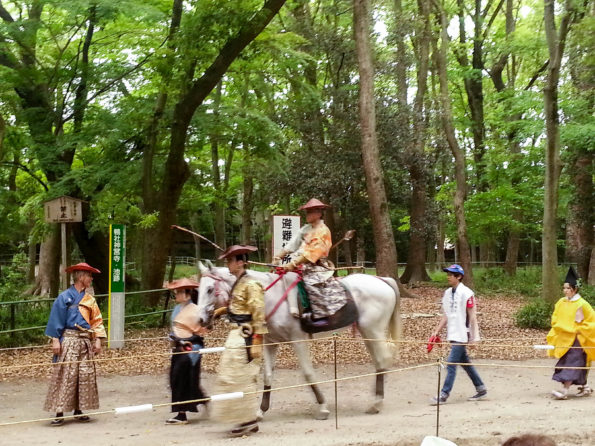
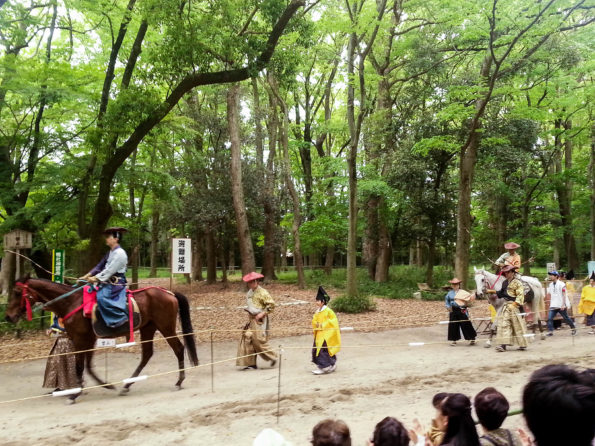
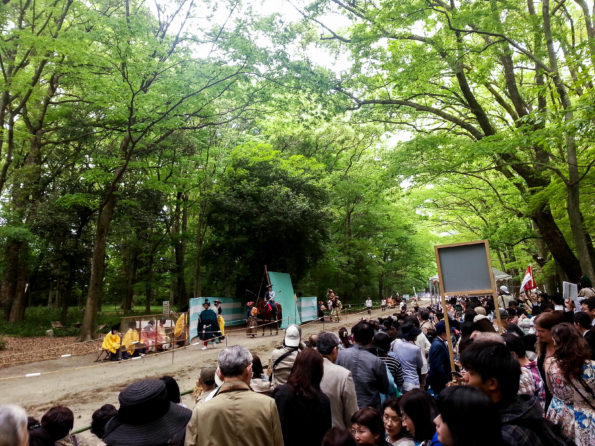
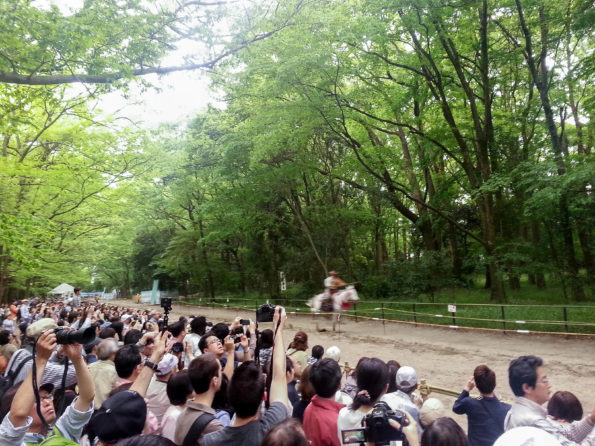
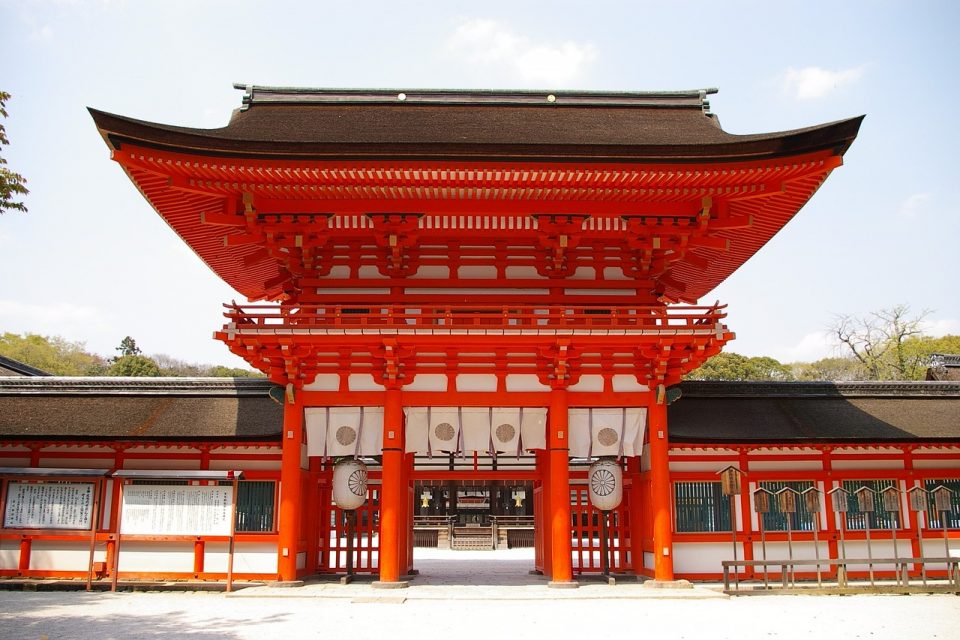
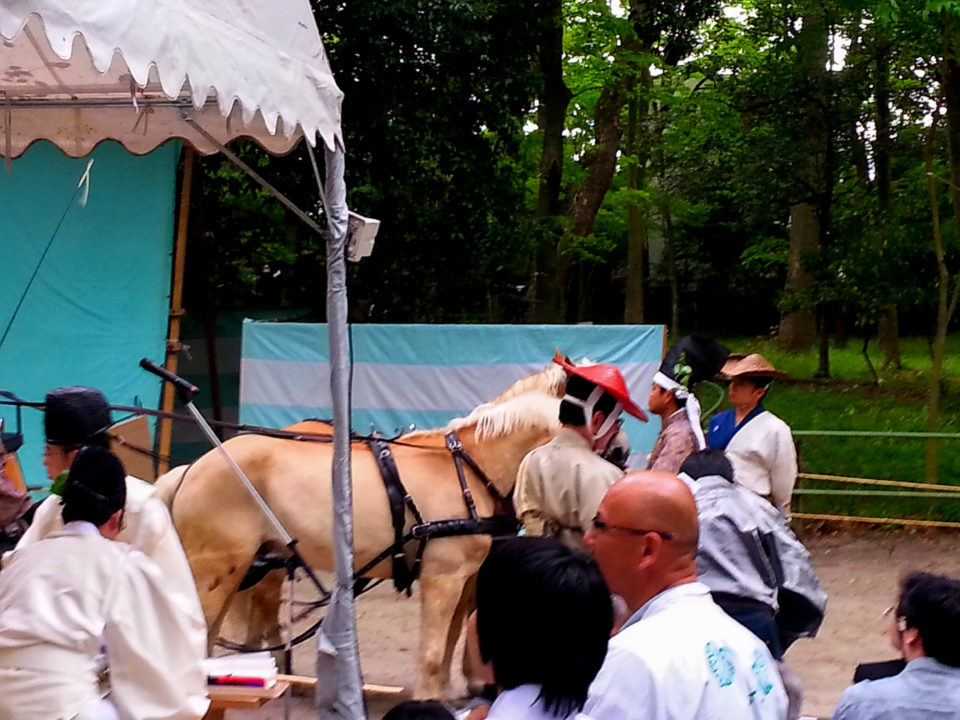
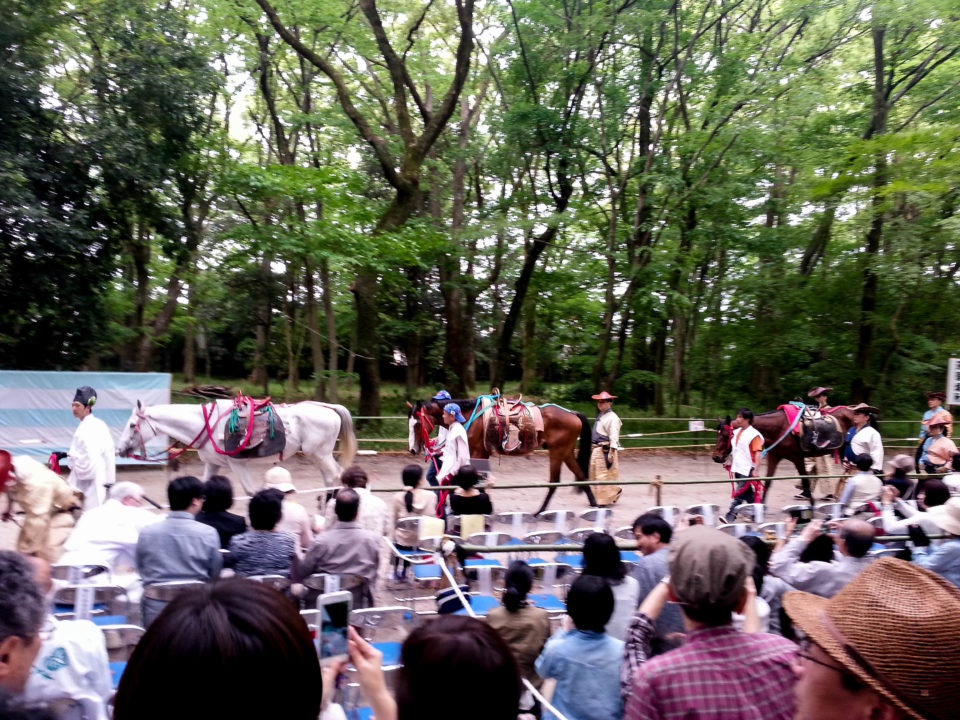



0 Comments